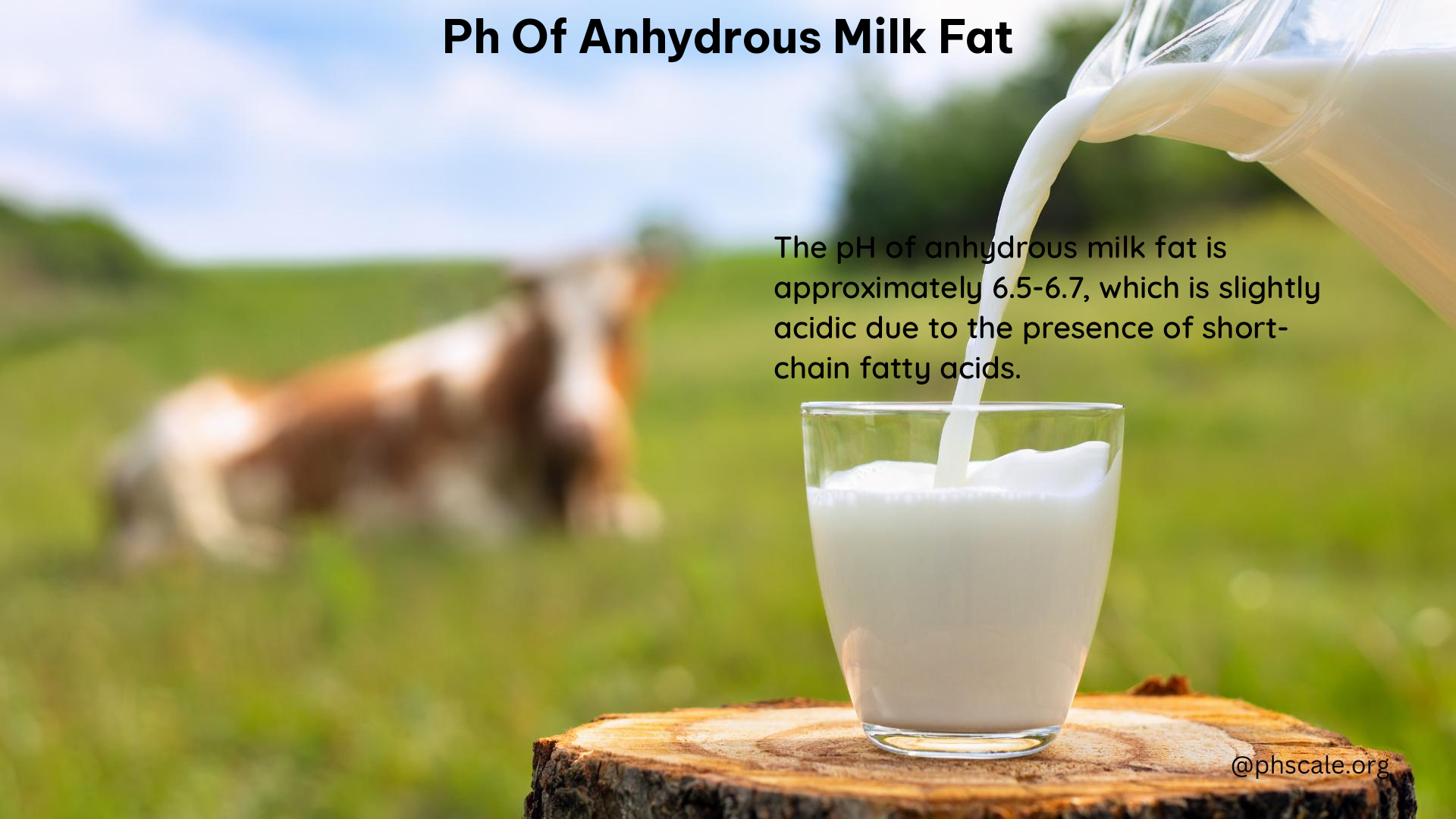The pH of anhydrous milk fat (AMF) is generally close to neutral, around pH 7.0, as it is primarily composed of neutral triacylglycerols. This neutral pH is essential for the stability and properties of milk fat nanoemulsions, which can be affected by the pH of the system. Understanding the pH of AMF and the importance of maintaining proper storage conditions is crucial for ensuring the quality and safety of this versatile dairy product.
History of Anhydrous Milk Fat
Anhydrous milk fat has a long history in various cultures, with roots dating back centuries. Ghee, a milk fat product with a more pronounced flavor and higher protein content than AMF, has been known and used in India and Arab countries for generations. This traditional use of milk fat products highlights the importance of understanding their properties, including their pH, to ensure optimal quality and performance.
Importance of Neutral pH in Milk Fat Nanoemulsions

In the context of milk fat nanoemulsions, the pH of the system can significantly impact the stability and properties of the emulsions. Studies have shown that milk fat nanoemulsions stabilized with dairy proteins, such as sodium caseinate, are most stable at a neutral pH of around 7.0. This suggests that maintaining a neutral pH is crucial for the optimal performance and stability of milk fat-based emulsions.
Maintaining the pH of Anhydrous Milk Fat
To maintain the neutral pH of AMF, it is essential to follow proper storage and handling procedures. AMF is typically packed in nitrogen-filled drums and can be stored for several months at a temperature of 4°C. This controlled storage environment helps to preserve the neutral pH and prevent contamination or degradation of the milk fat.
Contaminants, Chemicals, and Substances in Anhydrous Milk Fat
According to the Codex Alimentarius standard, AMF must contain at least 99.8% milk fat and be made from fresh cream or butter. No additives are allowed, except for the use of alkali to neutralize free fatty acids in anhydrous butteroil. This strict composition requirement helps to ensure the purity and quality of AMF, including its neutral pH.
Dealing with Contaminants and Maintaining pH Balance
To minimize the risk of contamination and maintain the pH balance of AMF, it is crucial to follow proper handling and storage procedures. This includes:
- Maintaining clean equipment and facilities during the production and packaging process.
- Storing AMF in nitrogen-filled drums at a temperature of 4°C to prevent oxidation and pH changes.
- Ensuring that the raw materials used to produce AMF are of high quality and free from contaminants.
By adhering to these best practices, manufacturers and users can help to preserve the neutral pH and overall quality of anhydrous milk fat.
Helpful pH Quantity to Consume
The neutral pH of AMF, around 7.0, makes it suitable for consumption without significant concerns about pH imbalance. This pH range is generally considered safe and compatible with the body’s natural pH balance.
Solutions and Alternatives
For DIY users or small-scale producers, maintaining the pH of AMF can be achieved by following the recommended storage and handling procedures. This includes:
- Storing AMF in nitrogen-filled drums at 4°C to prevent oxidation and pH changes.
- Ensuring that the raw materials used are of high quality and free from contaminants.
- Regularly cleaning and maintaining the equipment used in the production and packaging process.
By adhering to these best practices, users can help to preserve the neutral pH and overall quality of anhydrous milk fat.
Reference:
- https://www.researchgate.net/figure/Fatty-acid-composition-mol-of-anhydrous-milk-fat_tbl1_328646647
- https://www.sciencedirect.com/topics/agricultural-and-biological-sciences/anhydrous-milk-fat
- https://dairyprocessinghandbook.tetrapak.com/chapter/anhydrous-milk-fat-amf-and-butteroil
